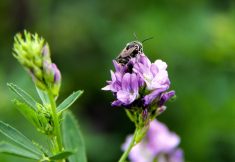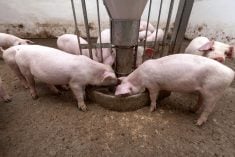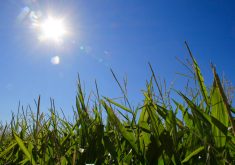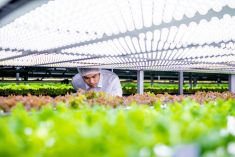Farmers who keep their chickens outdoors may want to watch the weather. A study of chicken farms in the western United States found that high winds increased the prevalence of campylobacter in outdoor flocks, a bacterial pathogen in poultry that is the largest single cause of foodborne illness in that country.
Researchers found that about 26 per cent of individual chickens had the pathogen at the “open environment” farms in the study, which included organic and free-range chicken farms. High winds the week prior to sampling and the farms’ location in more intensive agricultural settings were linked to a greater prevalence of campylobacter.
“Farmers need to be aware of the risk,” said co-lead author Olivia Smith, a recent Washington State University PhD graduate in the biological sciences.
Read Also

Jennifer Hayes appointed for second term as the Chairperson of the Canadian Dairy Commission
Jennifer Hayes has been re-appointed as Chairperson of the Canadian Dairy Commission by Heath MacDonald, Minister of Agriculture and Agri-Food.
“These environmental factors are influencing if the poultry are going to have foodborne pathogens, so farmers need to be aware of what’s around them. If there’s a lot of wind and if they’re in really agricultural areas, that’s a problem.”
To help reduce campylobacter exposure, the researchers suggested farmers consider installing windbreaks and watch weather patterns so they can bring chickens inside during high winds that could blow the bacteria onto their farms from nearby fields and livestock areas.
For the study, published in the journal Animals, researchers tested chicken feces taken from 27 farms in California, Oregon, Washington and Idaho. They took samples at most of the farms once a year for three years. They found that most flocks at these farms, 69.4 per cent, had some instance of campylobacter.
Researchers also interviewed the farmers about their management practices as well as types, breeds and ages of their chickens.
Only 11 of the farms in the study were officially certified organic producers, but all avoided using chemicals in their flocks, including antibiotics, vaccines or medications that kill parasites.
This is almost the opposite of commercial poultry producers who typically raise birds indoors in enclosed barns and treat them with medicines. These producers also select chicken breeds for efficiency.
The growing market in local, organically minded food production has a different set of values, said Jeb Owen, a WSU entomologist and senior author on the paper. These farmers reduce or fully eliminate chemicals, keep a wide range of chicken breeds and allow their flocks to roam outside because they believe it is better for the animal and the environment.
It is also what many consumers want, Owen said. But it doesn’t come without risks.
“We’ve spent a century raising birds indoors and forgotten about all of these parasites and pathogens that chickens used to be afflicted with, but they didn’t go away,” he said. “Now you have this rapidly exploding market of producers who want to raise their birds outside, but they have no background knowledge of the disease risk.”
Being outside means chickens are exposed to disease from wild birds and from contact with the ground, where they can pick up pathogens spread by feces of other infected birds.
Owen’s lab has taken on a range of research to better understand the disease risk that faces open environment chicken farms, including a study on enteric parasites like worms that live in the birds’ digestive systems and another on ectoparasites, those that are found on the skin and feathers.
His team is also undertaking a study to better understand the disease resilience of the many different breeds raised on these types of farms. The overall goal is to help farmers mitigate the risk.
“If they aren’t doing it already, farmers should set up a professional relationship with a veterinarian to get their flocks checked and monitored on a regular basis,” he said.
“Whether for productivity or for animal welfare, you don’t want your animals to be sick.”












